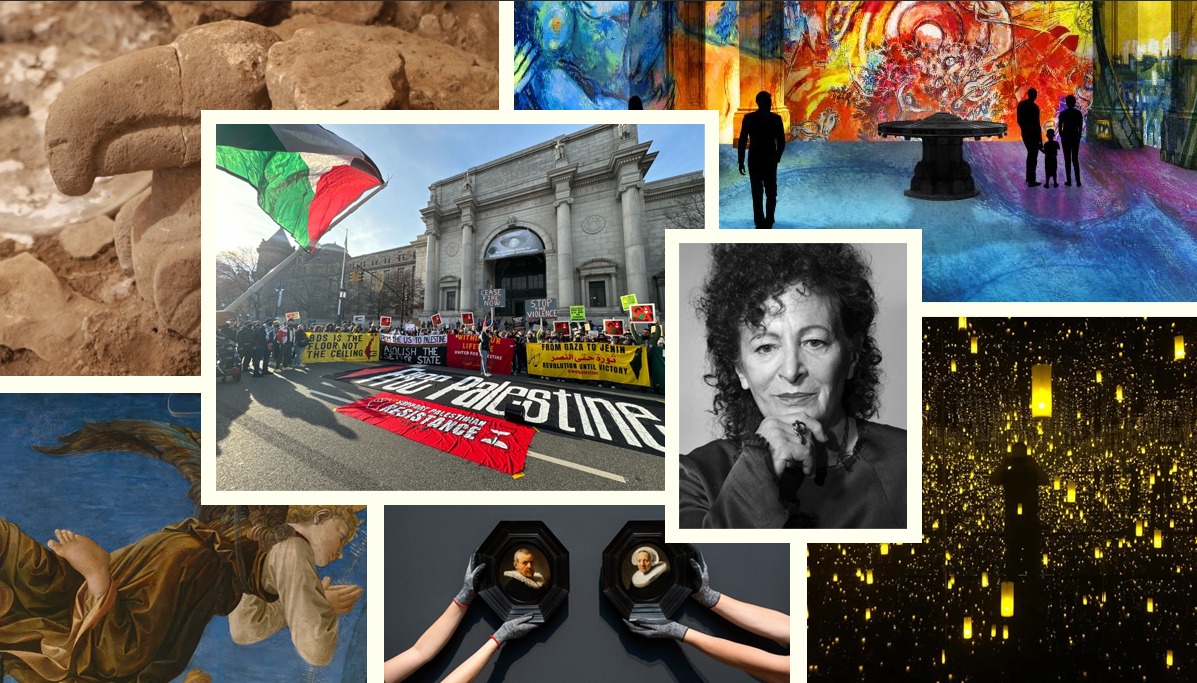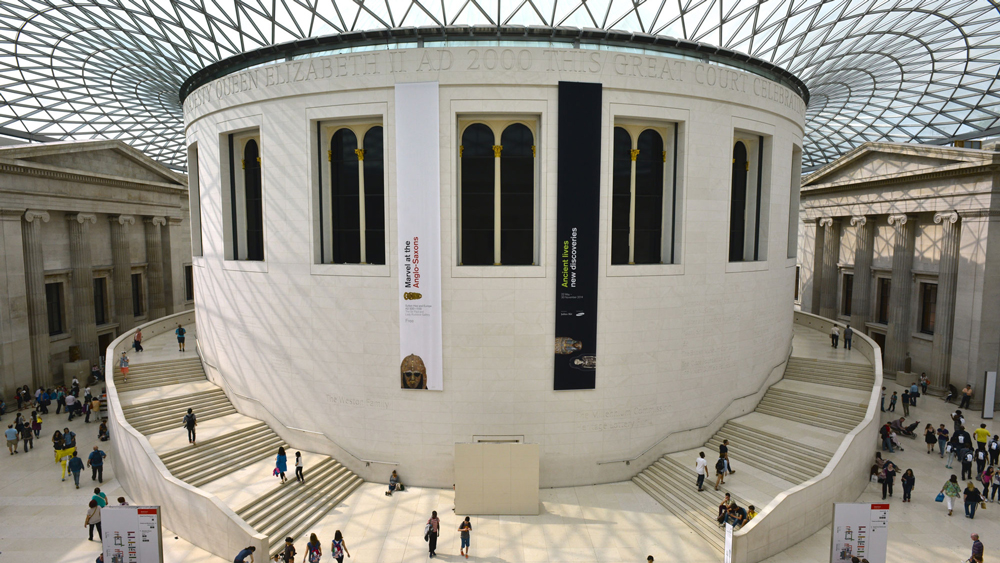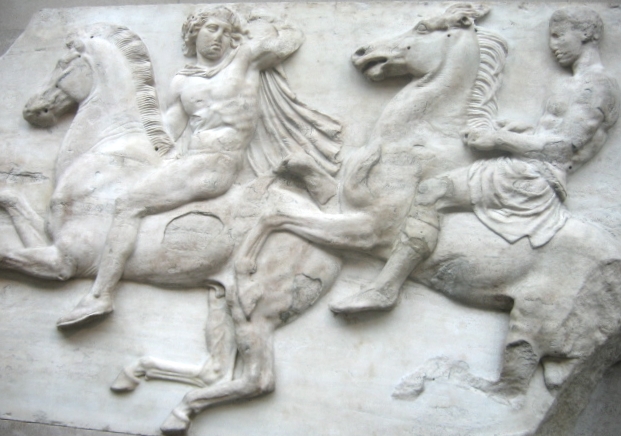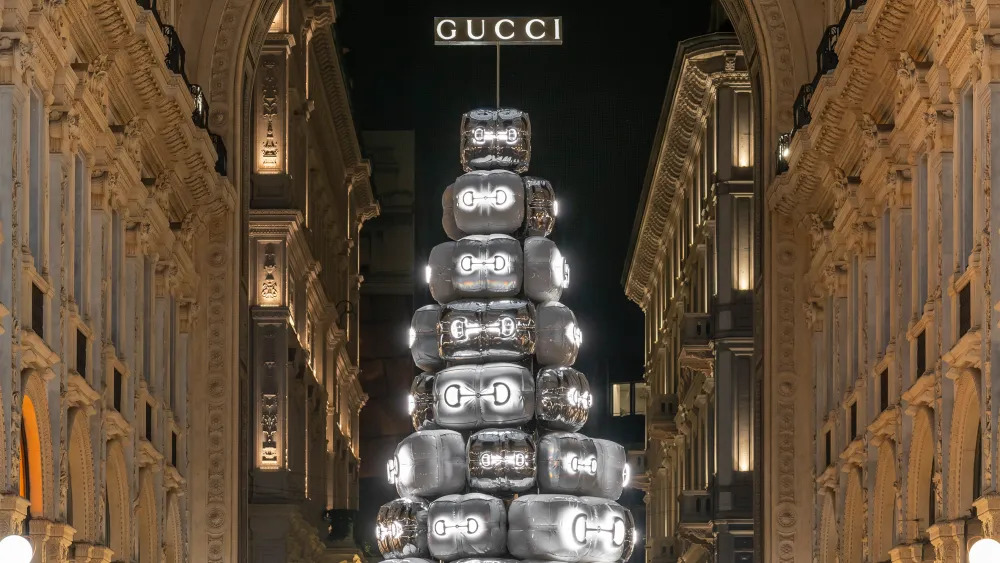This year, the art world witnessed a year of protests, disputes, hardships and all of these have carried the art scene to another new area, while artists, curators, writers gathered to make the world a better place.
Institutions and managerial issues
Most institutions had hard times this year, mainly because of management issues. The wrong management skills made a mark on the art scene. Institutions became the target of art society as they failed to manage advisory boards, museum archives, securing artworks, sponsorship deals, and many other significant issues.
Istanbul Biennial
Istanbul Biennial’s advisory panel problems marked its sign to the art scene. In January, the Istanbul Biennial advisory board met to review four shortlisted curators. One of the candidates was Defne Ayas, a well-known curator who has organized exhibitions such as the Gwangju Biennial in South Korea in 2021 with Natasha Ginwala, the Moscow Biennale in Russia in 2015, and the Baltic Triennial in Lithuania in 2012. Ayas was the preferred choice for most of the advisory panel, which included Selen Ansen, a curator based in Istanbul and curator at Arter Contemporary Art space in Istanbul, Agustín Pérez Rubio, an independent curator based in Spain, Iwona Blazwick, and Yuko Hasegawa, the director of the 21st Century Museum of Contemporary Art, Kanazawa, as well as Turkish-Armenian artist Sarkis, who resides in Paris. However, IKSV decided to work with Iwona Blazwick instead, leading to the resignation of three advisory panel members. The controversy arose when Turkish curators raised doubts about the selection of Iwona Blazwick as the curator for the upcoming Istanbul Biennial. They were puzzled about the criteria for her selection, considering she was already a member of the biennial’s advisory board.
British Museum
It is fair to say it has been a long time since the world has witnessed such a museum scandal. First, the thefts at the museum and the resignations that come within have affected the museum’s prestigious stance in the museum world.
The latest decision of the museum, signing a deal with British Petroleum (BP), will provide £50 million (~$63 million) in funding over the next decade to help the museum meet its carbon neutrality and facility modernization goals. Climate activists have been puzzled by the museum’s stated environmental goals in relation to its continued acceptance of Big Oil funding. At the British Museum’s annual trustees dinner in November 2022, museum chair George Osbourne announced that the institution will “no longer [be] a destination for climate protest but instead an example of climate solution,” ushering in the £1 billion (~$1.2 billion) “Rosetta Project” that would help the institution set course for “net zero carbon” operations.
Documenta
Documenta was another institution troubled by the advisory boards, decisions and also cencorship. The committee responsible for selecting an artistic director for the upcoming edition of Documenta has hit another setback. After two members left the committee earlier, the remaining four members have also resigned. This development has cast uncertainty over the future of the 2027 edition. The four members—Simon Njami, Gong Yan, Kathrin Rhomberg, and María Inés Rodríguez—had resigned after what the exhibition called “an extremely difficult decision-making process.”Their departures follow those of Israeli artist and philosopher Bracha L. Ettinger and Indian poet and critic Ranjit Hoskote, who resigned earlier.
Auctions – Rembrandt and Gustave Klimt
Without any doubt, Rembrandt made the old masters’ power come back of the year in auctions. Rembrandt was the most exciting discovery, as two Rembrandt portraits that were found in a private collection, unknown to scholars, sold for £11.2 million ($14.3 million) at Christie’s London. Another Rembrandt, nearly monochromatic work — “The Adoration of the Kings” (now dated c1628) — was cataloged as Circle of Rembrandt at Christie’s in Amsterdam in 2021 and estimated at €10,000-€15,000 but sold for €14 million.

Another old master Gustave Klimt, entered the highest-sold auction with two artworks, Insel im Attersee (Island in the Attersee) (ca. 1901) sold at Sotheby’s New York for $53.2 million, weeks before the sale of Dame mit Fächer (Lady with a Fan) (1917). Dame mit Fächer (Lady with a Fan), on the other hand, fetched £85.3 million ($106.8 million) at Sotheby’s London modern and contemporary evening auction this summer.
Claude Monet’s Le Bassin aux nymphéas (1919) was first estimated at $65 million; the painting fetched $74 million at Christie’s Impressionist and Modern Art Evening sale in New York this November.
Protests and climate activists and Gaza situation in the art world
This year, arts and politics again raised a voice in the art world, gathering people and activists together for censorships, wars, and inequalities.
Just Stop Oil’s breaking the glass protecting of Diego Velázquez’s 17th-century “Rokeby Venus” with orange safety hammers, as well as climate activists’ soraying a dinousaur skeleton at the Natural History Museum in London demanding the UK government halt oil and gas projects. The lockdown of the Isabella Stewart Gardner Museum, and a new protest at the Dinosaur Wing of the American Museum of Natural History (AMNH), once again brought the problems of secutiry in museums.
On other hand, museums were also scene for the Gaza protests. Recently, Palestinian solidarity groups, activists, and community members marked International Human Rights Day with a demonstration for Palestinian human rights at the Canadian Museum for Human Rights (CMHR) to bring attention to the human rights crisis in Gaza and to call for a ceasefire.
Artists and activists rallied outside the entrance of the Art Basel Miami convention center to demand a permanent ceasefire in Palestine.
The American Museum of Natural History (AMNH) closed its main entrance on Dec 2, as approximately 700 pro-Palestine protesters staged an action outside the New York City institution.
The main entrance of the Whitney Museum of American Art was doused with fake blood during a march for Gaza in Manhattan yesterday afternoon, November 22.

The Guggenheim Museum closed temporarily closed its entrance on Nov 11 due to protests. Eight anonymous artists and cultural workers aimed to shed light on the Israeli military’s ongoing killing of Palestinian children in Gaza at the spiral entrance of the museum while unfurling fabric banners bearing images of mourning Palestinians.
Trends in art
Art and Fashion
This year, art world used fashion as a new space to discover new creative projects, Rebel: 30 Years of London Fashion, in Design Museum London, encompassed “nearly 100 innovative fashion looks from ground-breaking debut and early collections, many of which have entered pop-culture history—and launched global design careers.”
On the other hand, Fashioned By Sergent, organized in conjunction with the Tate Britain, explored the work of portrait painter John Singer Sargent, who “often chose what his sitters wore and, even if they arrived in his studio dressed in the latest fashions, he frequently simplified and altered the details. Exploiting dress was an integral part of his artistry.”
Another groundbreaking exhibition was Fashion City at Museum of London Docklands. The exhibition not only tells the story of London with photographs, it also opens a new area of discovering London from another point of view. From East End tailors and factories to the couture boutiques of the West End, this fascinating fashion exhibition charts the contribution Jewish designers and retailers made in shaping London as a global fashion city.

In Turkey, we have also seen a huge Fashion collides art exhibition. To celebrate its 50th anniversary, the Turkish department store company Beymen invited the viewer to unveil “Golden Opulence,” an exhibition for which more than 50 fashion designers and brands were commissioned for a unique piece. Curated by the fashion historian Laurence Benaïm and accompanied by a hefty tome published by Assouline, the rather fabulous creations were showcased in a sleek glass-and-steel installation set in the majestic Tophane-i Amire, a 15th-century Ottoman factory of weaponry now hosting a Culture and Art Center.

Immersive experiences
This year, immersive experiences in art shows once again marked its sign in curation and exhibiting techniques. Immersive Chagall and immersive Monet exhibitions were all over the place in 2023.
Claude Monet: The Immersive Experience currently occupies The Boiler House, welcoming visitors with 360-degree projections, unique storytelling, atmospheric sound effects, and a spellbinding VR experience.
The interactive exhibitions are shifting. Landscapes take viewers through the Arctic, poisoned rivers, a threatened Amazon rainforest, and other scenes across the globe.
The exhibition “Chagall, Paris — New York” focuses on his journeys between two cities he spent much time in.
Among these immersive experiences, Kusama’s Infinity Mirror Rooms, and Teamlab’s installations were among the most significant exhibitions.
Old masters rule again
As the auction world has seen the power of old masters, the art scene has also experienced this trend. The exhibition has become collaborations and gatherings of old masters and young artists.
Rijk Museum’s Vermeer show and Boston Museum of Fine Art’s long-awaited and celebrated Hokusai exhibition were another look at old masters in the modern world.

Tate Britian’s Dante Gabriel Rossetti and his Pre-Raphaelite artworks The Rosettis and at last but not least, while the year is closing National Gallery’s exhibition of Renaissance painter Francesco Pesellino (about 1422-1457) brought renassaince to the daylight again.
Women of the year – Most talked artists
This year most talked artists happened to be women. Nan Goldin, the pioneering photographer has been ranked as the contemporary art world’s most influential person. Recently, Goldin called off a project for the New York Times Magazine because of the newspaper’s pro-Israel bias in its reporting on Gaza. Goldin, 70, took the number one spot on the ArtReview Power 100 list. This year, for the first time, the top 10 is made up entirely of artists who use their work and platforms to intervene in the pressing social and political issues of the current moment.
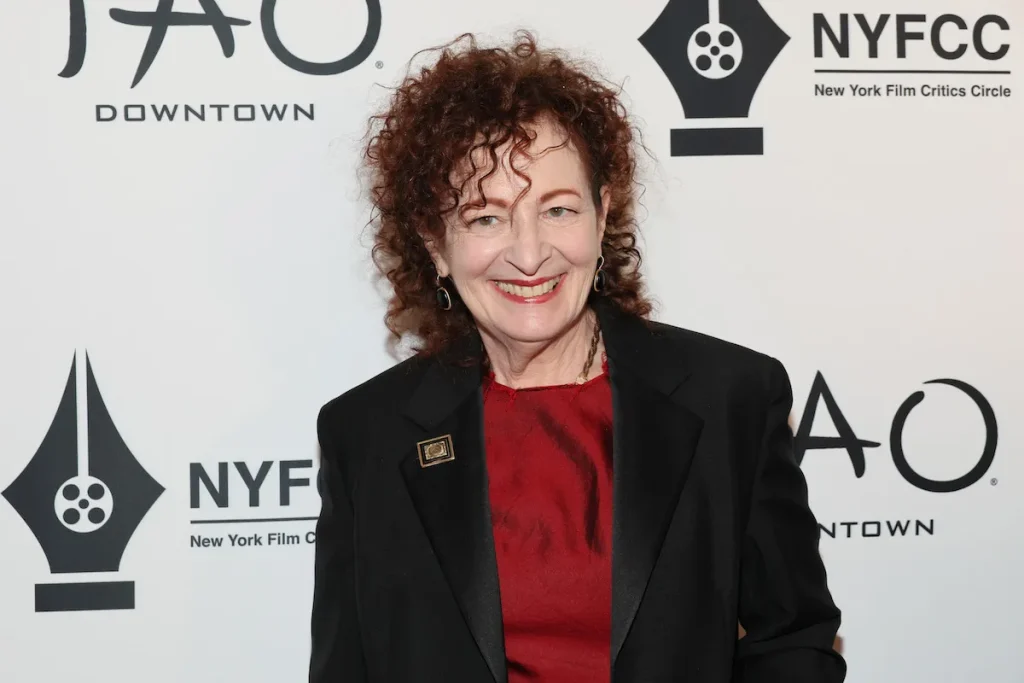
PHOTO DIA DIPASUPIL/GETTY IMAGES
Yayoi Kusama became the icon of the year. She was the Louis Vuitton campaign, we have seen dots on bags, her blockbuster show Infinity Mirror Rooms traveled in Europe and the US, and she was also one of the most talked people as she apologized for her past racist comments. Kusama apologized for racist comments in her 2002 autobiography. “I deeply regret using hurtful and offensive language in my book,” Kusama, 94, said in a statement to The San Francisco Chronicle in October 2023. “My message has always been love, hope, compassion, and respect for all people. My lifelong intention has been to lift up humanity through my art. I apologize for the pain I have caused.”
Marina Abromovic’s first major show in the UK at London’s Royal Academy of Arts drew so much attention as Abromovic performed different works during the exhibition run.
Disputes of 2023
Turkey Takes Back Looted Artefacts from US
At least 41 historical artifacts of Anatolian origin were illegally taken out of Turkey and have now been returned to the country from the US. The Turkish Culture and Tourism Ministry has announced that additional cultural assets have been returned to Turkey since 2021 as a result of the cooperative efforts between the ministry and the US Manhattan District Attorney’s Office over the past five years.
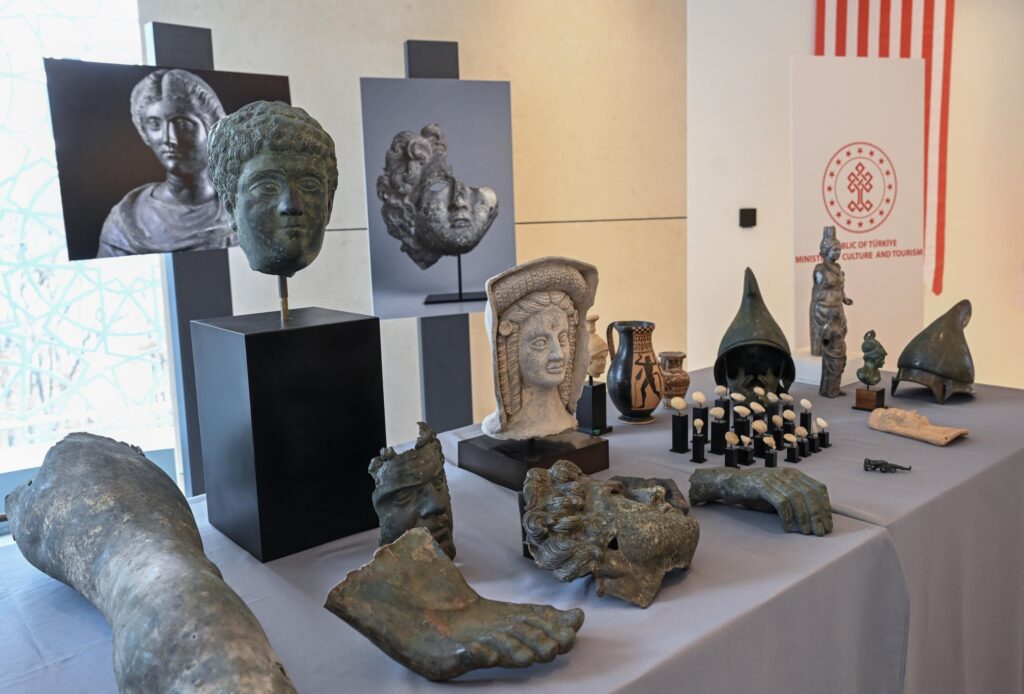
Turkey’s Deputy Culture and Tourism Minister Gökhan Yazgı and an accompanying delegation received the artifacts at the Turkish House in New York during a handover ceremony.
The handover ceremony was held in New York with an accompanying delegation. The process between the institutions of the two countries worked together for five years. As a result, total 3,059 artefacts have been repatriated.
Us and Greece
A total of 30 artifacts, including a Corinthian helmet and a marble statue of Aphrodite, were returned by the United States to Greece in a ceremony on December 15.
The antiquities—including breastplates, a Byzantine silver plate, and a bronze chariot attachment—were recovered by Homeland Security Investigations, the investigative arm of the U.S. Department of Homeland Security, with the office of Manhattan District Attorney Alvin Bragg. Collectively, the pieces are valued at $3.7 million. Bragg said in a statement that 19 of the pieces were voluntarily surrendered by New York gallery owner Michael Ward and three were seized from British art dealer Robin Symes. A source familiar with the case said that the remaining eight items are in the possession of investigators, who know that the items were stolen, but have not yet specified where, how, or by whom they were stolen or recovered from.
UK and Parthenon marbles
The classical marbles were once part of a frieze that decorated the Parthenon temple in Athens, built 447-432 BC, but they were removed in the early 19th century by agents of British diplomat Lord Elgin when Athens was under Ottoman rule. They were sold in 1816 to the British government and placed in the British Museum. Now, Greece wanst their marbels back. But,
PM Rishi Sunak canceled his meeting with Greek Prime Minister Kyriakos Mitsotakis because the latter intended to discuss the repatriation of Greek antiquities, including the Parthenon Marbles, which are currently held in the British Museum. The marbles are held under the name Elgin Marbles.
Refik Anadol and Jerry Saltz on social media
An online skirmish between famous A.I. artist Refik Anadol and New York Magazine’s senior art critic Jerry Saltz escalated into full-on beef on X over Thanksgiving weekend. It raised age-old questions about the role of art critics, but this time the whole Web3 community got involved.
The fight broke out over Unsupervised, a 24-foot-tall screen-based work installed on the ground floor of the Museum of Modern Art in New York in 2022 and recently acquired for the museum’s permanent collection. Undeniably eye-catching, it is made up of multi-dimensional waves of color that represent an algorithm’s interpretation of MoMA’s entire online catalog, echoing the forms of some of modernism’s most famous movements. Artnet News’s own critic Ben Davis found the work pleasant enough but clearly over-hyped, with MoMA boldly claiming that it “reimagined the history of modern art and dreams about what might have been.”
Archeological discoveries
Aphrodite and Dionysus Sculptures Revealed
Heads of goddesses of love and beauty Aphrodite and deity of wine Dionysus found in the ancient city of Aizanoi with a history dating back 5,000 years. The statue head of Aphrodite, known as the goddess of love and beauty in Greek mythology, and the statue head of Dionysus, the deity of wine, were discovered during excavation works.
2,700-Year-Old Guardian Deity Found in Iraq
A 2,700-year-old Assyrian lamassu—a protective deity sculpture—was recently re-excavated in Iraq, astounding experts with its size and condition.
New findings in Göbeklitepe and Karahantepe: The first painted neolithic statue
New finds were discovered in Göbeklitepe and Karahantepe. At around 12,000 years old, Göbekli Tepe is the world’s oldest megalithic site – and it has a “sister site” called Karahantepe. Archaeologists have recently made some groundbreaking discoveries in the Stone Hills (Taş Tepeler) that will leave an indelible mark on human history. Firstly, they unearthed the first-ever painted Neolithic statue from Göbeklitepe. Secondly, they discovered a 2.3-meter human statue located in Karahantepe. This statue appears to be of a seated person with accentuated ribs, spine, and shoulder bones. Lastly, they found a life-size wild boar statue made of limestone located in Göbeklitepe.
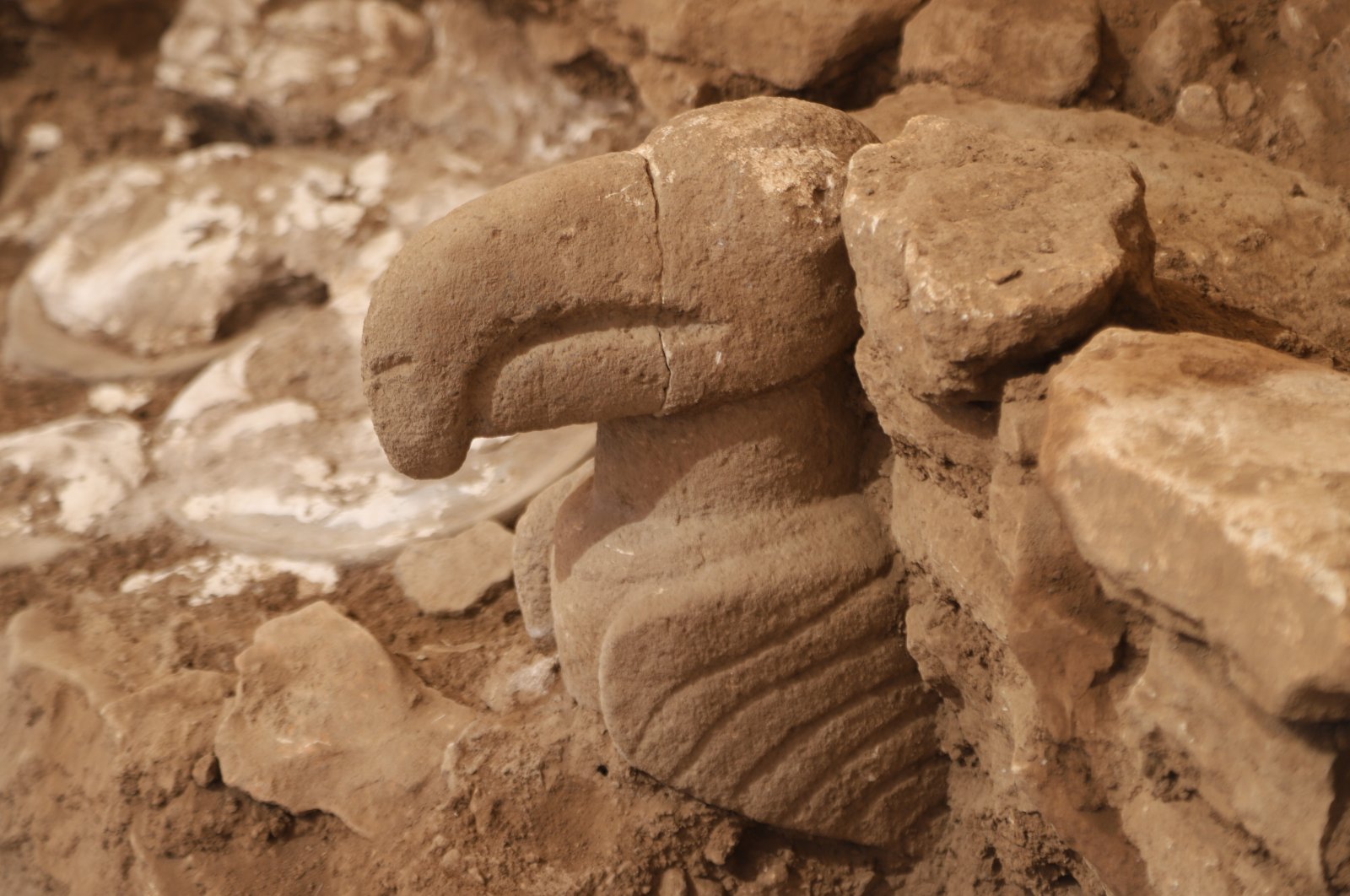
57,000-Year-Old Neanderthal Markings Found in a Sealed French Cave
Scientists analyzed hundreds of wavy lines, dots, and faint striations—known as finger flutings—left on the longest and most even wall of an ancient cave in La Roche-Cotard in France’s Loire Valley. The markings seem to have been made by Neanderthals sweeping and pressing their fingers across a thin brown film on the limestone walls. It is unclear, however, what they mean. Made more than 57,000 years ago, these are the oldest identified Neanderthal markings thus far.







